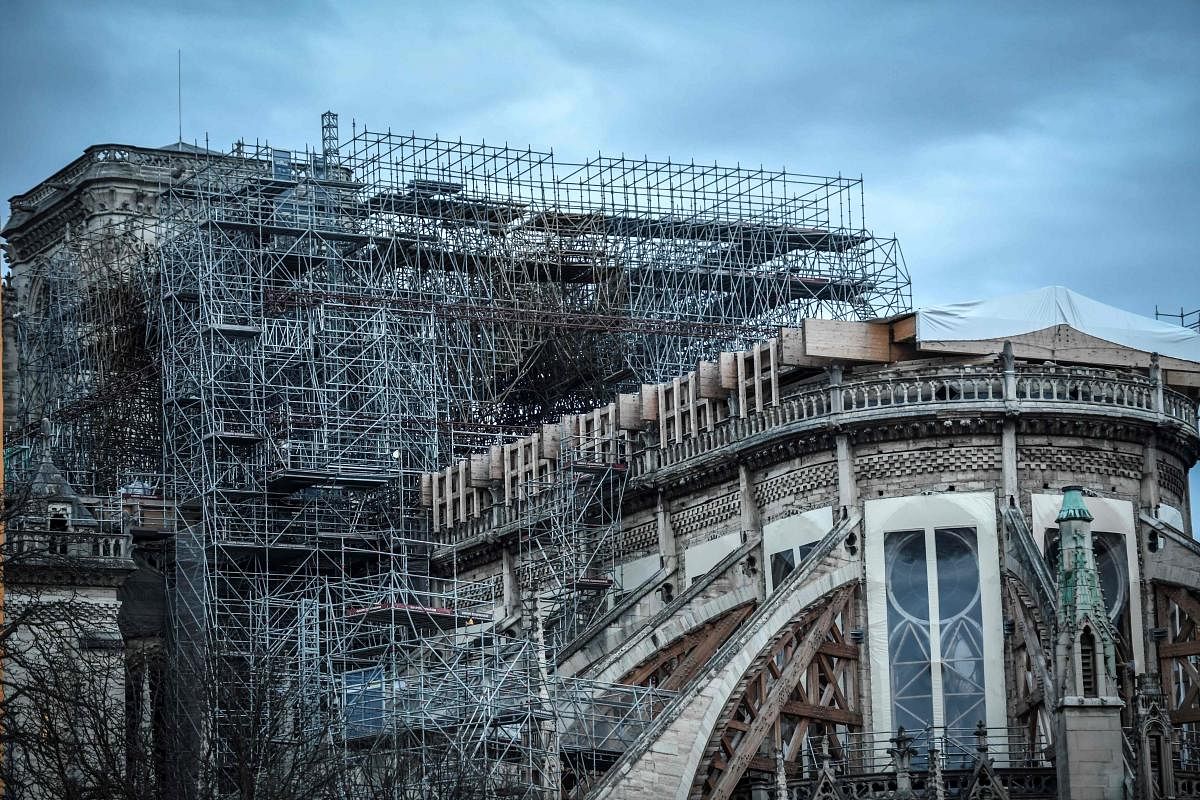
Eight months after a devastating fire ravaged the Notre-Dame cathedral in Paris, engineers are preparing for a crucial but complicated step in the herculean restoration effort: removing a mound of scaffolding mangled in the blaze.
Within weeks, they are set to embark on the most delicate operation so far in the rescue effort. They have to extract 10,000 metal pipes forged by the inferno into a giant web-like structure that must be removed for work to proceed but without further unsettling the enfeebled edifice.
The scaffolding was erected for renovation work on the 13th-century cathedral before a fire on April 15 tore through Notre-Dame's roof and dramatically toppled its spire.
What remains of the metal platform that once encircled the spire now threatens the stone vaulted ceiling underneath and with it the very integrity of the cathedral which, for the first time in more than 200 years, could not host Christmas mass this year.
Stabilisation of the landmark cathedral is still the priority -- with rebuilding only likely to start in 2021.
Engineers are getting ready to take these next steps.
Workers have so far fastened about two-thirds of the scaffolding, using large metal girders. Only the highest parts of the scaffolding remain to be secured for removal.
This will be done with the help of a giant crane -- 75 metres (246 feet) high and able to lift eight tonnes -- that was installed this month on the cathedral's southern flank, overlooking the River Seine.
A second, lighter scaffolding frame is being erected on either side of the old scaffolding. This new structure will allow abseilers, dubbed squirrels by the project team, to go in and saw the melted scaffolding into manageable parts for the crane to remove them piece by piece.
The dismantling, which is expected to last several months, is meant to start in February, weather depending.
An electric transformer station has been delivered to the work site by barge to provide power for the operation.
The Catholic cathedral's interior has been emptied with the help of robots. What could be saved has been itemised and stored in tents in the courtyard, which is due to reopen progressively to visitors from next month.
The inventories have been completed for the nave -- the long axe of the cross-shaped Gothic cathedral -- and for the transepts, the two shorter arms crossing the nave.
But there is still much rubble in the vaulted ceiling. From a platform that has already been erected, abseilers will shortly begin clearing the mess with special vacuum cleaners.
The intricately-carved wooden choir stalls, which date from the 16th century, are protected by a temporary roof. They will be disassembled for cleaning and then reinstalled.
The organ, which survived the blaze, will have to be removed to have its nearly 8,000 pipes painstakingly cleaned from the layer of lead dust deposited by the melting of the spire.
Tests are being done on the cathedral's 26 chapels to determine if they, too, had been contaminated.
The eight bells in the fire-damaged northern belfry have to be removed for cleaning and remounted. The bells in the southern belfry were not touched.
Reconstruction of the spire and other damaged parts of the church could begin in 2021.
But the spire has proved controversial, with some arguing for it to be replaced by an exact replica, and others -- including French President Emmanuel Macron -- arguing for a "contemporary" touch.
Macron has set a five-year target for the restoration work to be completed.
So far, some 320,000 donations and pledges totalling 922 million euros (over $1 billion) have been received -- ranging from a single euro offered by an American child to 200 million euros by French billionaire Bernard Arnault.
Investigations into the cause of the fire are ongoing, but experts are leaning towards negligence -- perhaps a discarded cigarette butt or a short circuit -- rather than criminal intent.